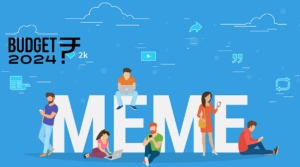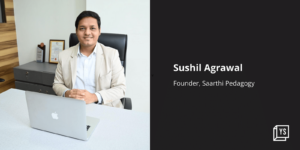Yuko Shimizu is an award-winning Japanese illustrator based in New York City. She is an educator at the School Of Visual Arts in New York city, and has worked with Apple, Pentagram, MTV, and Mitsui.
Anindito Mukherjee is an independent photojournalist and documentary photographer based in New Delhi. He has worked at Reuters, Getty Images, India Today, and the European Press Photo Agency. He graduated from Delhi University.
Both of them are speaking at the DesignUp 2021 conference this month. The organisers’ response to India’s apocalyptic second wave of the COVID-19 pandemic is to host a virtual fundraising drive along with the stellar lineup of speakers.
To be held on the weekends of June 11-20, 100 percent of donations will go to charities bringing much-needed relief to rural India. This will be in the form of dry rations, oxygen concentrators, and health centre wards.
As media partner for the conference series, see YourStory’s coverage of DesignUp’s earlier online panels in 2020, May the Fourth be with you and The pandemic’s impact on design. See also our write-ups on the annual DesignUp conference editions from 2019, 2018 and 2017, and our d-Zen (‘Design Zen’) section for more design resources.
Yuko Shimizu and Anindito Mukherjee join us in this chat on the importance of the creative mindset, pandemic resilience, and lifelong learning.
Edited excerpts from the interviews:
YourStory [YS]: What are some outstanding examples you have seen of effective design or creativity during the pandemic?
Anindito Mukherjee: The coronavirus illustration issued by two medical illustrators at the Center for Disease Control and Prevention (CDC), gave visual identity to the virus.
Another example would be the Jab tak dawai nahi tab tak dhilai nahi campaign (‘No carelessness till a medicine is found’). I would also highlight the photographs of the mass cremations shot by various photographers in India.
Yuko Shimizu: Filming and photography got really difficult to do especially during the beginning of the pandemic. But we are seeing a lot more animation and illustration – this came mostly from the desperate need to make things work, but it ended up with some great results.
Even in desperate situations, there are always winners. Some industries ended up winning big – like gaming, streaming, and related entertainment, and even alcoholic beverages, to name a few.
I have seen many instances of those winning industries taking risks they normally wouldn’t, to work with creatives to come up with great projects.
YS: Your work has a unique blend of art and design! What do you see as the key differences and commonalities between art and design in your work?
Yuko Shimizu: I am not a designer. I have never been educated in design and I have no clue about design. But I have a good eye for design, and I love anything that is well designed.
I think it comes down to good compositions that make beautiful designs, and I try to put compositions as one of the most important aspects when I create my drawings.
YS: What are the key challenges facing designers and creative communities in these grim times, and how can they be overcome?
Yuko Shimizu: As I mentioned earlier, there are always winners, even in the grimmest of times. Winners, especially during these tough times, are willing to use the unexpected money they have gained.
I am sure it does not apply to everyone, but I certainly see I get more projects from companies that belong to the industries mentioned above. And it is very clear because they were not the industries I often worked with in past. I am certainly taking newer projects that were not my norm, and seeing where it goes.
Creatives need to be flexible, especially during tough times and see the opportunities in unexpected places.
Anindito Mukherjee: The lockdown impacted the business of communications to a large extent. Newspapers reduced the number of pages or shut down, and digital was preferred over physical.
Now, the digital platform works in an entirely different way. It is more dominated by influencers and the number of likes, shares, and so on. So, those of us who produce content with creativity at the core face a challenge as we are fighting algorithms that don’t care for the quality of our craft.
YS: What are some notable projects you are currently engaged in?
Yuko Shimizu: Nowadays, pretty much every project comes with NDAs, so I can’t talk much. But I am always working on multiple projects simultaneously. This includes art for game companies, comic book, and book covers, blockbuster film promotional art, and vinyl record jackets.
They are all fun, and clients are extremely nice and supportive of artists. In fact, that’s what I have been finding lately. A lot of the clients are extra nice and supportive of the artists. I haven’t had one of those nightmare clients who ask revisions after revisions in quite a while. Maybe this pandemic is affecting everyone’s psyche positively?
But honestly, I have a personal book project I am really interested in doing, though I haven’t had much time. I am off from teaching for the summer and hoping to get that started while I don’t have to worry about students.
YS: Who are some of the photographers you admire the most, and why?
Anindito Mukherjee: Kevin Frayer, a colleague in Getty Images for his amazing work. And Alex Webb, the all-time favourite.
YS: What would you define as success for yourself as a photographer?
Anindito Mukherjee: When a non-photographer appreciates a picture.
YS: What are three core skillsets or mindsets that designers need in the uncertain post-pandemic world?
Yuko Shimizu: Flexibility, openness to new opportunities, and willingness to try out new things. Things are uncertain, and things change.
Anindito Mukherjee: Adapting to the new normal – improvising your craft. For example, how would a tyre brand position itself and communicate when there is a three-month-long lockdown?
Or, how to promote hospitality services when everything is shut? So here comes improvising – which is changing the market proposition to sync it with the prevailing conditions.
YS: Looking back at your decades of experience what are some notable shifts or trends you are seeing in design?
Yuko Shimizu: I can’t speak for the design industry in general, because I only work in a very small portion of it. But what I can say is – I do get this asked often – and what I want to emphasise is that it is not just a design industry shift, but the whole world is shifting with technology, faster than ever.
And whether you are working in design, the creative industry, an office job, as a student studying, or a parent raising kids, the shift is in everything and everywhere.
YS: When you look back at your years of work, what are some types of photographs you are most proud of?
Anindito Mukherjee: Photographs for me personally have three stages of shelf life. The ones for the next day’s paper, those that last till the news last, and those that become relevant and interesting to look at even when it’s no longer the news.
YS: What are some habits of yours that you think helps in strengthening your design and artistic sensibilities?
Yuko Shimizu: We need to keep curious about things we don’t know. Openness and a willingness and attitude to learn can keep us going, regardless of who we are or what we do. This is a basic human need to be a better human, beyond just art and design.
Anindito Mukherjee: I try to unwind and not think a lot about photography, which I think might stress one out more.
YS: What are some books about the design you would recommend for the “non-designers” out there?
Yuko Shimizu: I don’t read design books. I read books about subjects, places, and people I don’t know much about or have never been. This attitude keeps my mind open to learn about and understand the world better which leads to becoming a better person (well, hopefully).
Anindito Mukherjee: I would recommend Google!
YS: What are the challenges that photographers face in the crowded fast-moving digital world?
Anindito Mukherjee: Huge supply versus limited demand. And of course, the content of similar quality being available at a much cheaper cost.
YS: What are some emerging ethical challenges in the world of photography, and how can they be tackled?
Anindito Mukherjee: Plagiarism and fake news. And it can only be checked by verifying something from multiple sources.
YS: What are your three tips or parting words of advice for the aspiring designers and artists in our audience?
Yuko Shimizu: Have high ambitions, work hard, open to learning, correcting, and adjusting your path. Good luck!

![You are currently viewing [DesignUp 2021] An illustrator and a photojournalist walk into a design conference](https://blog.digitalsevaa.com/wp-content/uploads/2021/06/DU10-1623911116422.png)








